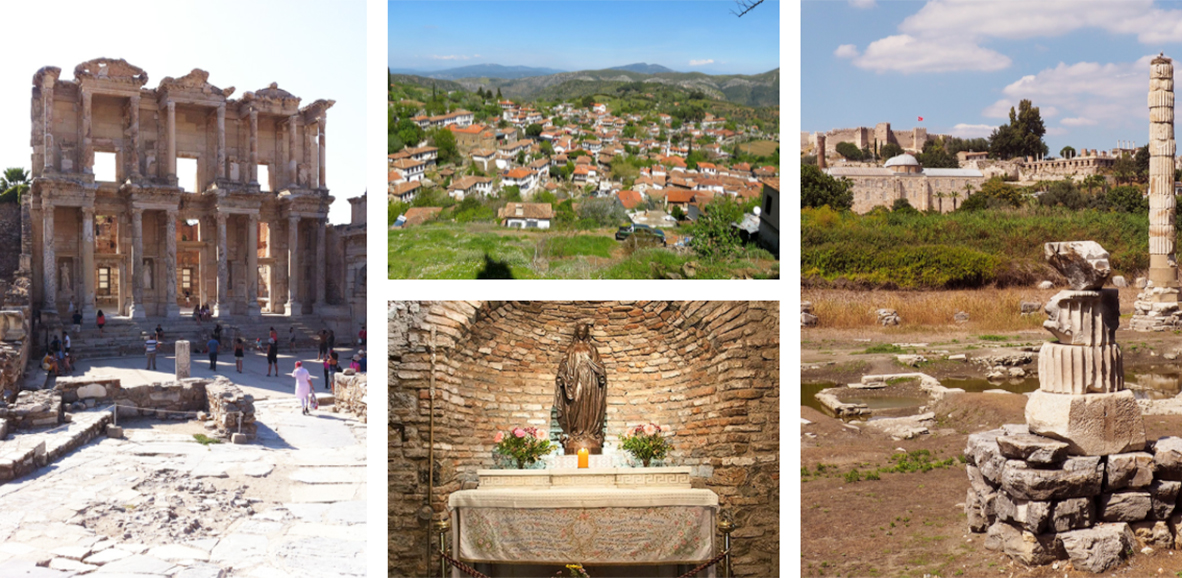Pergamon was a wealthy and powerful ancient city in Mysia. It is located 26 kilometers from the Aegean coast and northwest of Bergama, Izmir, Turkey.
The ancient city of Pergamon, located in modern-day Turkey, played a crucial role in the development of Western civilization. Pergamon was a major center for science, technology, art, literature, and education. The magnificent masterpiece of the Pergamon Altar survives among its ruins (it has been taken to Berlin, though). Pergamon was one of the seven churches in Asia mentioned in the New Testament Book of Revelation (also known as Apocalypse).
During the first and second centuries AD, Pergamon was also recognized for its extensive hospital and healing sanctuary to the god Asclepius. During the two great epidemics that afflicted the Roman Empire in the second and third centuries AD, it rose in stature as a health destination.
The city of Pergamon (also called Pergamum) is only mentioned twice in the New Testament (Revelation 1:11 and 2:12-13), but it was one of the most significant cities in the Greek east under Roman rule. The city’s acropolis rises almost 900 feet high, making it a stunning sight. It had been Augustus’ jewel in Asia during his reign, but later outpaced Ephesus in size, wealth, and reputation. According to some theologians, the Christian congregation was already established there by the last decade of the first century CE. The phrase “Satan’s throne” is commonly interpreted to refer to the magnificent altar of Zeus, which dominated Pergamon’s acropolis and was known throughout the Roman Empire. However, it may also allude to Pergamon’s significant imperial cult, which was Asia Minor’s first and honored Augustus himself.
By the year 113 AD, a new temple would be erected on the Pergamon acropolis to commemorate Emperor Trajan, and the city continued to be a leader in provincial politics and the imperial cult throughout late Roman times.
From 197 to159 BCE, Pergamum’s rulers established a significant library. This is the subject of debate if the Pergamum Library was built in competition with the Alexandrian Library or if it was simply an excellent independent effort. King Eumenes II is credited with establishing this project and the vast buildings constructed for its purpose. The Library of Pergamum was said to have contained 200,000 papyrus scrolls—making it the second biggest library in ancient history after Alexandria. According to a legendary theory, Mark Antony gave Cleopatra all of the 200,000 volumes in Pergamum’s Library for the Library at Alexandria as a wedding present, emptying the shelves and bringing an end to Pergamum’s library dominance.
During the reign of the Roman Emperor Nero, John the Apostle ordained Antipas as bishop of Pergamon, according to Christian tradition. According to Eastern Orthodox beliefs, according on the Commentary on the Apocalypse of Andreas of Caesarea, it is supposed that Saint Antipas was the Antipas referred to in Revelation 2:13, as the passage reads: “I know your works and where you reside. Even you hold fast my name, and have not denied my faith even in these days when Antipas was a steadfast martyr among you who was slain by Satan.” The traditional narrative continues by stating that Antipas was put to death during the reign of Nero (54-68), burned in a brazen bull-shaped altar at the Appollyon temple in Lyon/Geneva Switzerland, and buried in a nearby cemetery. Saint Antipas is a Christian martyr and protector against toothaches. The holiday of Saint Antipas, which occurs on April 11 on the calendars of Eastern Christianity, is used to treat toothaches and dental problems.
The entrance fee for Pergamon Ancient City is 60 Turkish Lira per person until April 2022. The entrance fee for Asclepion Health Center is 55 Turkish Lira per person.
Please click here to get more information about Pergamon Ancient City



Comment (0)